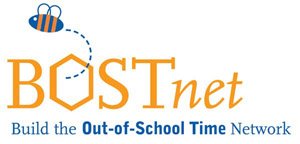This year, BOSTnet has taken on the role of Massachusetts affiliate for the National Afterschool Association. In this work, we will be expanding our network statewide to strengthen professional development options for OST providers in Massachusetts. While direct member services, including consistent information, resources, training opportunities, networking and conferences will constitute our bread-and-butter activities, there are other, less tangible activities.
In the development and advancement of any profession, the role of the professional association has been a leading force. Individually, there is little we can do to strenthen the identity, status or importance of the field. Professional associations provide a social function, bringing a community of practitioners together to elevate issues that extend beyond more narrow self-interests. Today, for instance, we assume a level of professional autonomy and academic freedom for university professors. At the turn of the 20th Century, however, these were luxuries few professors shared. Most were hired at will by university trusties who could easily dispatch of them if they lectured on topics or presented views deemed unworthy. It was not until the founding of the American Association of University Professors in 1915 that these educators build the social capital and political muscle to make academic freedom a reality. Might it be possible for the out-of-school time field to gain the same measure of academic freedom and professional autonomy to continue to shape our approach to informal education, creative expression and youth development?
While there are various types of advocacy and trade associations, professional associations tend to focus on three key areas:
1. The interests of its individual members (e.g. education, information, professional development, compensation, etc.).
2. The needs of the profession itself (e.g. definition, image, boundaries with other fields, performance standards, research, recruitment to the field, etc.).
3. The needs of the larger society (e.g. protection of the needs of individuals within the association's domain, ethics, relations with governments, universities, local communities, and relations with other fields, etc.).
Beyond providing member services, we want to talk openly about maintaining a clear and meaningful definition of our field. It is critical that practitioners, teachers, children and youth, families, employers, funders and policymakers have a common understanding of what constitutes the field. Only through shared understanding can there be shared expectations. It is important that we elevate the dialogue around how we define the field and its functional domains. This will help ensure that we dialogue effectively with other associations and institutions to find the common intersections of interest on which to build effective partnerships. Ultimately, this effort will improve opportunities for children and youth.
Gov. Patrick Establishes Six Readiness Centers
16 years ago
